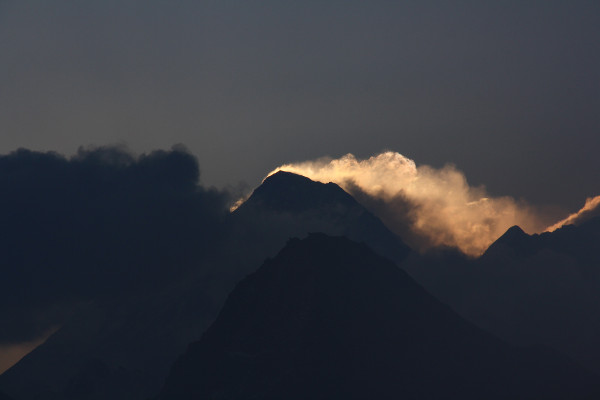Last week (July 2016), the Nepalese government announced that it would be setting new regulations for climbing Mount Everest.
These new regulations, which are by no means the first regulations to hit Mt Everest in recent years, are being put in place to reduce the risk to climbers on the mountain.
The Department of Tourism released their amended draft of the Mountaineering Expedition Regulation under the Tourism Act in which the following rules were added to the document.
- Climbers must be accompanied by a guide at all times – no solo climbs.
- Climbers must have summited a 7,000 meter peak prior to attempting Everest.
- People over the age of 75 are banned from climbing.
- People who are blind are banned from climbing.
- Double amputees are banned from climbing.
- Helicopter rides over EBC are to be heavily restricted.
- Sherpas will also get a summit certificate after the climb.
On top of these main changes, there have been a number of smaller changes. Pregnant woman and people with severe illnesses are not allowed to work as liaison officers and locals do not have to climb a 7,000 meter peak previously.
Instead, “Nepali climbers … can apply for a climbing permit after successfully completing a basic mountaineering training of at least 30 working days.”
Like previous regulations introduced to the mountain, the Nepali government seem focused on introducing incredibly niche rules that impact only a slight percentage of the climbing population.
Only one blind person has ever attempted Mt Everest and it’s certainly difficult to imagine another! The same goes for double amputees and persons over the age of 75!
Yes it’s true that Nepali climber Min Bahadur Sherchan and Japanese mountaineer Yuichiro Miura are attempting to climb Everest this season in their 80s, but this is a very rare occurrence.

Of course, the Nepalese government are stuck between a rock and a hard place. Everest expeditions draw a huge amount of tourism, media and income for the small country, but it also poses many safety issues, particularly if you let every man and his dog attempt the summit.
Whilst the government often appears to be introducing new safety regulations, most of the time these new safety regulation impact barely anyone from climbing.
Saying that though, there are several important changes this year that will impact a larger climbing proportion. The first is solo climbers. Mountaineers know the danger of climbing alone and these new rules will at least put a stop to that on the Everest.
Not only does this rule affect every single climber, it means that teams will often have top solo climbers joining them, adding to the groups safety.
The other change that is significant is the need to climb a 7,000 meter peak prior to attempting Everest. This rule has been dancing around the mountain for some time and we can only hope that this new draft will finally incorporate the regulation fully. It is important to note here that these new regulations are not enforced yet and are still up for review.
Another change for good is that Sherpas will also receive summit certificates after their climb. Anyone who has seen these guys work on the mountain will appreciate this new rule. Sherpas generally work harder and longer than clients and deserve a summit certificate more than anyone!
All there is to do now is wait and see if these new regulations are enforced.
Let’s hope so.


At the time of my reading, have these rules become official yet?
Hi Ryan, I believe these regulations are official. That being said, things change so rapidly in Nepal that they may be outdated now.
Mark and Ryan, these rules are set and stone, they are going to be inforced this summer
Thank you to all to allow nature to be ruined.
There is no nature so high up.
Mountaineering is getting more and more expensive by the minute. These new rules are set to maximize profit and little impact to overall safety. What is worse others are following Nepal in jacking up the permit fees… yearly! Lucky are the mere mortals that did 8000er few years ago – unless I win a lottery I doubt I ever join that club… maybe through Pakistan.
I understand your perspective. As a Nepali, my aspiration is to summit Everest. The challenge is significant for both Nepalis and foreigners, and these regulations primarily aim to enhance safety for climbers. The restriction on solo climbers is a major step forward in terms of safety.
Regarding the permit fees, it seems reasonable to request them. Nepal, being a third-world country, lacks the resources to adequately maintain and support climbers on Everest. Therefore, the government seeks some fees. While I acknowledge that the fees may not be entirely directed towards facilitating the climb, they contribute to the overall development of our nation in various ways.
I do agree that the permit fees can be perceived as exorbitant, but it's important to consider the vast disparity in average income between third-world countries like Nepal and first-world countries. The fees collected help support the growth of Nepalese society. I hope you've had the opportunity to climb Everest or any other 8000er by now. If not, I sincerely hope you get the chance to do so soon.